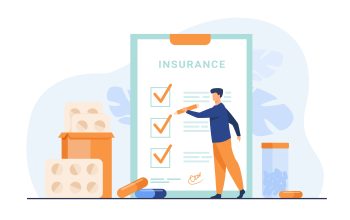A Complete Guide to Car Insurance in the U.S.: What You Need to Know
Car insurance is an essential aspect of vehicle ownership in the United States. It protects you from financial loss in the event of an accident, theft, or damage. Whether you’re a new driver or looking to reassess your current policy, understanding car insurance is crucial. This comprehensive guide will walk you through everything you need to know about car insurance in the U.S., including types of coverage, factors affecting rates, and tips for finding the best policy for your needs.
1. Understanding Car Insurance
Car insurance is a contract between you and an insurance company that provides financial protection in case of accidents or damage involving your vehicle. In exchange for regular premium payments, the insurance company agrees to cover certain costs associated with your car, such as repairs, medical expenses, and liability claims.
2. Types of Car Insurance Coverage
a. Liability Insurance
Liability insurance is the most basic and mandatory type of car insurance in most states. It covers damages and injuries you cause to others in an accident. There are two main components:
- Bodily Injury Liability: Covers medical expenses, lost wages, and other damages for people injured in an accident you caused.
- Property Damage Liability: Covers the cost of repairing or replacing property damaged by your vehicle, such as other cars, fences, or buildings.
b. Collision Coverage
Collision coverage pays for damage to your car resulting from a collision with another vehicle or object, regardless of who is at fault. This coverage is particularly valuable if you have a new or expensive vehicle.
c. Comprehensive Coverage
Comprehensive coverage protects against non-collision-related damage, such as theft, vandalism, fire, or natural disasters. It also covers damage from hitting an animal, such as a deer.
d. Uninsured/Underinsured Motorist Coverage
This coverage protects you if you’re in an accident with a driver who has insufficient or no insurance. It covers medical expenses and, in some cases, property damage when the at-fault driver is unable to pay.
e. Personal Injury Protection (PIP) or Medical Payments (MedPay)
PIP or MedPay covers medical expenses for you and your passengers, regardless of who caused the accident. It may also cover lost wages and other related expenses. Note that PIP is available in certain states and is mandatory in some, while MedPay is more widely available.
f. Gap Insurance
Gap insurance covers the difference between the actual cash value of your car and the amount you owe on your auto loan or lease. This coverage is particularly useful if you owe more on your car than it is worth.
g. Roadside Assistance
Roadside assistance provides services such as towing, battery jump-starts, and lockout assistance if your vehicle breaks down. It can be a valuable addition to your policy if you frequently drive long distances.
3. Factors Affecting Car Insurance Rates
a. Driving Record
Your driving history significantly impacts your insurance rates. A clean record with no accidents or traffic violations will generally result in lower premiums. Conversely, a history of accidents or speeding tickets can increase your rates.
b. Age and Gender
Young drivers and male drivers often face higher insurance premiums due to statistical data showing higher risk levels. As you age and gain more driving experience, your rates may decrease.
c. Vehicle Type
The make and model of your car affect your insurance rates. Luxury and sports cars, which are more expensive to repair or replace, typically have higher premiums. Additionally, cars with advanced safety features may qualify for discounts.
d. Location
Where you live influences your insurance rates. Areas with higher crime rates or more traffic congestion may lead to higher premiums. Additionally, insurance rates can vary between states due to different regulations and risk factors.
e. Credit Score
In many states, insurers use your credit score as a factor in determining your rates. A higher credit score often leads to lower premiums, while a lower score can increase your rates.
f. Coverage Levels and Deductibles
The amount of coverage you choose and your deductible amount will impact your premiums. Higher coverage limits and lower deductibles typically result in higher premiums, while lower coverage limits and higher deductibles can reduce your rates.
4. Tips for Finding the Best Car Insurance Policy
a. Shop Around
It’s essential to compare quotes from multiple insurance providers to find the best rates and coverage options. Use online comparison tools or work with an insurance agent to get quotes from various companies.
b. Consider Bundling
Many insurers offer discounts if you bundle your car insurance with other policies, such as homeowners or renters insurance. This can result in significant savings on your premiums.
c. Look for Discounts
Insurance companies often provide various discounts that you may qualify for, such as safe driver discounts, multi-car discounts, or discounts for having anti-theft devices installed in your vehicle.
d. Review Your Policy Regularly
Your insurance needs may change over time, so it’s a good idea to review your policy regularly. Make adjustments as needed to ensure you’re getting the best coverage and rates.
e. Understand Your Policy
Take the time to read and understand your insurance policy. Know what is covered, what is excluded, and the terms of your coverage. This knowledge will help you make informed decisions and avoid surprises in the event of a claim.
f. Check State Requirements
Each state has its own minimum insurance requirements, so be sure to comply with your state’s laws. Failure to meet these requirements can result in legal penalties and financial loss.
g. Choose the Right Deductible
Select a deductible amount that fits your budget and financial situation. A higher deductible can lower your premium but requires you to pay more out-of-pocket if you make a claim. Conversely, a lower deductible means higher premiums but less financial burden in the event of a claim.
5. Common Car Insurance Myths Debunked
a. “I Don’t Need Car Insurance if I Don’t Drive Much”
Even if you drive infrequently, car insurance is still required by law. Additionally, accidents can happen at any time, and having insurance protects you from potential financial loss.
b. “My Car Insurance Covers All Types of Damage”
While car insurance provides coverage for many types of damage, there are limits and exclusions. For example, standard policies may not cover damage from natural disasters or certain types of vandalism without additional coverage.
c. “Red Cars Cost More to Insure”
The color of your car does not affect your insurance rates. Insurance companies base rates on factors such as the make and model of the vehicle, not its color.
d. “Insurance Rates Are the Same for Everyone”
Insurance rates vary widely based on individual factors such as driving history, age, location, and vehicle type. Each driver’s situation is unique, so it’s important to get personalized quotes.
6. Conclusion
Understanding car insurance is essential for protecting yourself and your vehicle from financial loss. By knowing the different types of coverage, factors affecting rates, and tips for finding the best policy, you can make informed decisions and ensure you have the protection you need. Remember to shop around, review your policy regularly, and stay informed about state requirements to get the best value for your car insurance.


